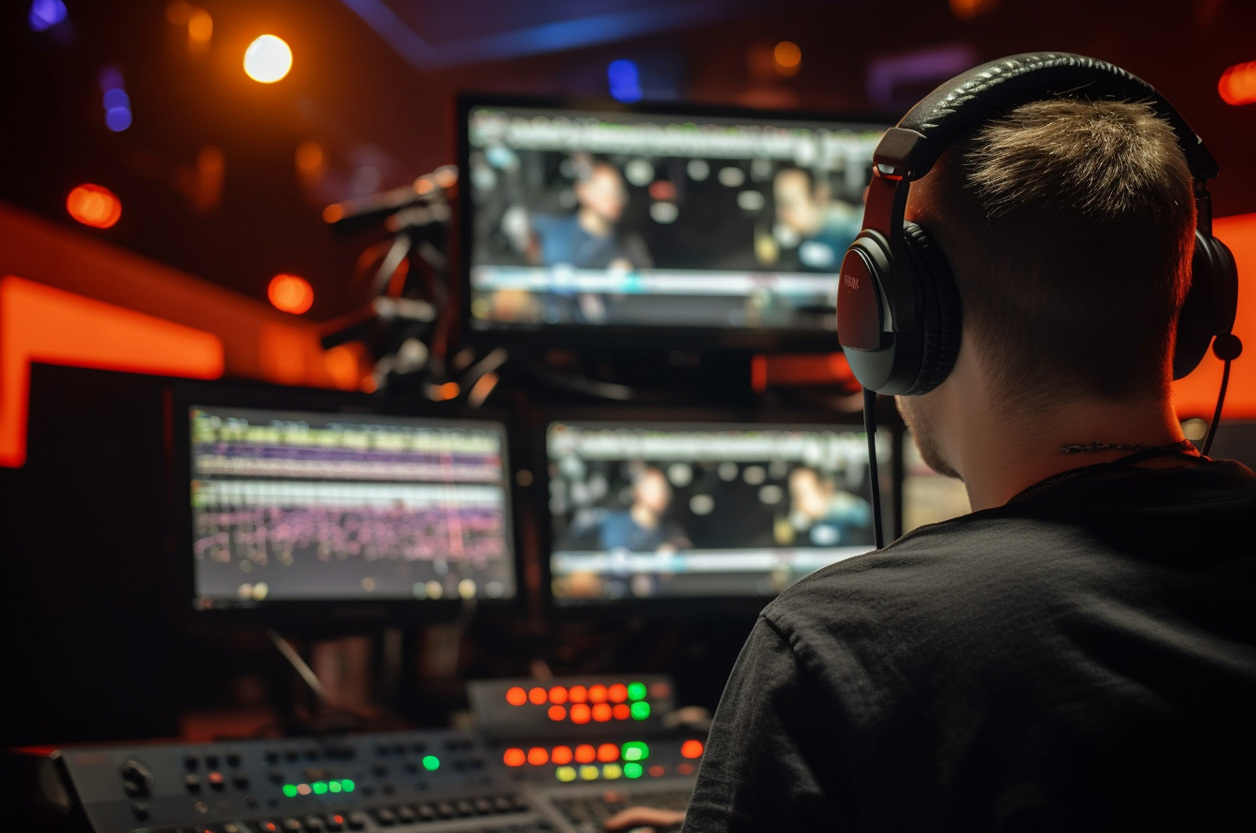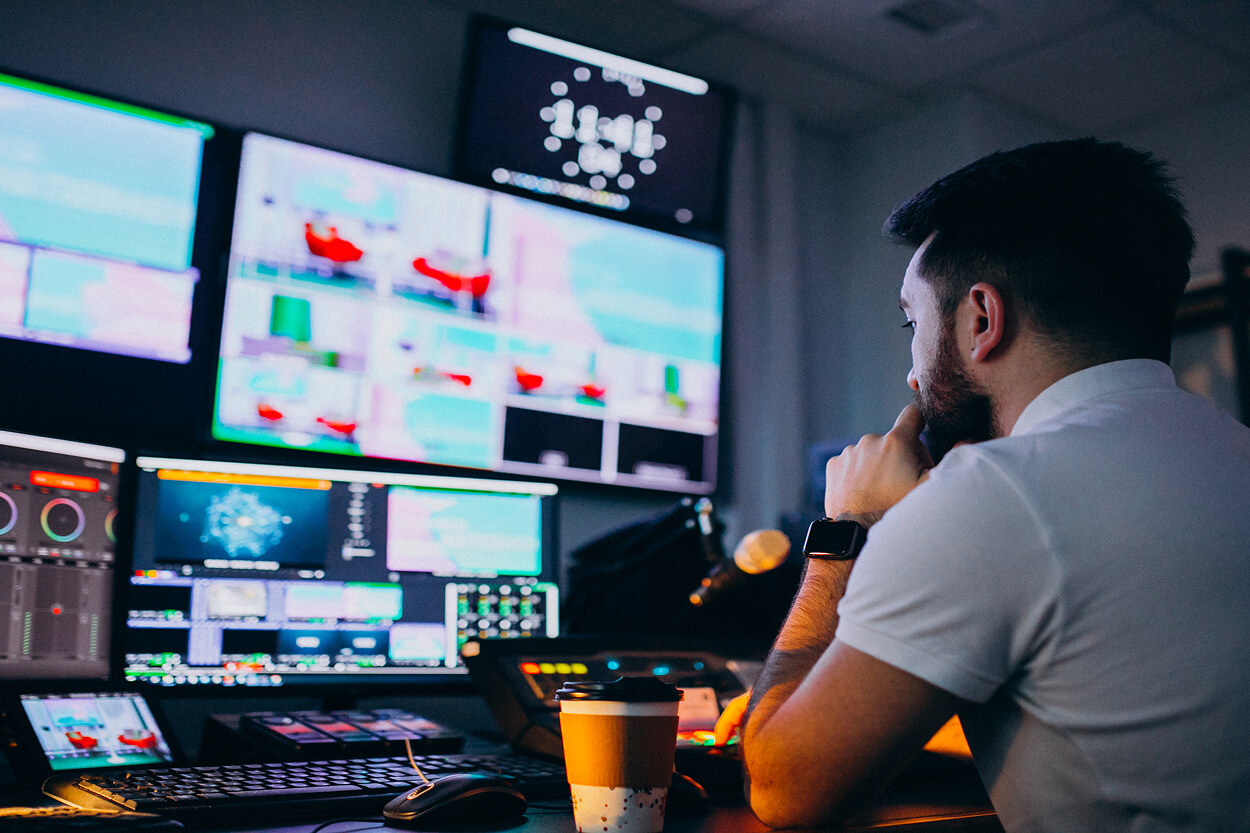How AI Is Transforming Content Production in the Broadcast Industry

Artificial intelligence is no longer a futuristic concept in the broadcast industry. It is now a powerful enabler of content production, automating tasks that once required significant human effort and unlocking new possibilities for creativity, personalization, and efficiency. From real-time transcription to automated video editing, AI is revolutionizing how broadcasters and media companies operate.
AI in Pre-Production: Research and Planning
In the early stages of content development, AI is already making an impact. Natural Language Processing (NLP) models can analyze large datasets to surface trending topics, relevant events, or gaps in existing coverage. Broadcasters can use AI tools to generate content ideas, build editorial calendars, and even assist in writing scripts or storyboards.
AI also supports metadata generation by scanning archives and tagging relevant materials, saving hours of manual sorting and cataloging. This not only speeds up planning but also ensures a more efficient reuse of existing content.
Intelligent Camera Systems and Live Production
During production, AI-powered tools are increasingly used in camera systems and on-set automation. Object detection, facial recognition, and motion tracking enable automatic camera switching and framing, reducing the need for manual camera operators.
AI also helps optimize lighting and audio in real-time by analyzing environmental factors. In sports broadcasting, AI-driven systems can follow players, generate highlight reels automatically, and even predict interesting moments based on crowd noise or contextual data.
Post-Production and Editing with AI
Post-production is where AI demonstrates significant value. Tools like Adobe Sensei, Blackmagic DaVinci Resolve, and other machine learning-enhanced software can automate:
- Color correction and grading
- Scene detection and segmentation
- Audio noise reduction and leveling
- Subtitling and translation
AI can generate rough cuts by analyzing content structure and identifying key scenes. This speeds up the work of human editors while maintaining creative control. Moreover, AI models trained on branding guidelines can ensure consistent intros, transitions, and other stylistic elements.
AI for Personalization and Recommendation
In a media landscape dominated by on-demand content, personalization is key. AI algorithms analyze viewer behavior, preferences, and demographics to suggest personalized content, enhancing engagement and retention.
Broadcasters are integrating recommendation engines not only on OTT platforms but also within traditional cable networks and mobile apps. AI-driven personalization can:
- Suggest content playlists based on watch history
- Adapt thumbnail and preview content to different audiences
- Customize programmatic ad placements
Speech-to-Text and Language Processing
Speech recognition and NLP are crucial components of AI in broadcasting. Real-time speech-to-text engines allow for live captioning, benefiting accessibility and regulatory compliance. Language models can:
- Translate content into multiple languages
- Automatically generate headlines, social media posts, or summaries
- Detect sentiment and tone for better content targeting
These capabilities support multi-language broadcasting and improve discoverability through optimized metadata and tagging.
Predictive Analytics and Content Strategy
AI also empowers broadcasters with predictive analytics. By analyzing viewership patterns, engagement metrics, and historical trends, AI can forecast the performance of specific types of content or scheduling strategies.
For example, predictive models can recommend:
- Optimal airing times for specific demographics
- Topics likely to trend on certain platforms
- Formats (short-form vs. long-form) more likely to succeed with target audiences

AI in Archiving and Asset Management
Large broadcasters manage thousands of hours of content that need to be archived and retrieved efficiently. AI enhances Media Asset Management (MAM) systems by automating the tagging, classification, and indexing of content.
Computer vision can identify objects, locations, and people in archived footage, making it easier to search and repurpose historical media. This reduces costs and accelerates documentary or anniversary coverage workflows.
Ethics and Human Oversight
While AI offers powerful tools for efficiency, it also raises concerns about authenticity, bias, and control. Deepfake technology, for instance, can be used maliciously, so broadcasters must employ verification techniques and transparency guidelines.
Moreover, editorial oversight is necessary to avoid algorithmic bias or over-automation. The best results come from combining AI-driven speed with human creativity and judgment.
Long-Tail Questions and Answers
How is AI used in live TV production?
AI is used for tasks like automatic camera switching, real-time object tracking, and adjusting lighting or audio based on environmental conditions. These features help reduce the need for manual intervention and improve production quality.
Can AI fully automate video editing?
AI can handle repetitive tasks like scene segmentation, noise removal, and color grading, but human editors are still essential for creative storytelling and final polishing.
What role does AI play in content recommendation?
AI analyzes viewer data to suggest personalized playlists and relevant content. It enhances engagement by delivering what the audience is most likely to enjoy.
Is AI safe to use in broadcasting?
Yes, when implemented responsibly. Human oversight is critical to ensure ethical use and prevent issues like misinformation or bias.
How can small broadcasters benefit from AI?
AI tools are increasingly affordable and scalable. Even smaller production teams can use cloud-based platforms for transcription, translation, and content insights without needing a large in-house tech team.
Conclusion
Artificial intelligence is transforming every stage of content production in the broadcast industry, from planning and shooting to editing and audience engagement. By integrating AI tools, broadcasters can stay competitive, deliver personalized experiences, and streamline workflows — all while keeping human creativity at the core.
With the right balance of automation and editorial oversight, AI becomes a partner in storytelling, not just a tool for efficiency. As AI technologies mature, their impact on the broadcast landscape will only grow, enabling new forms of content and deeper audience connections.
Our Case Studies








